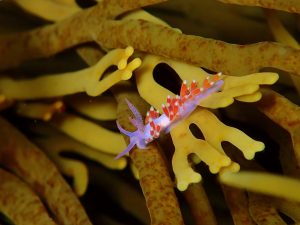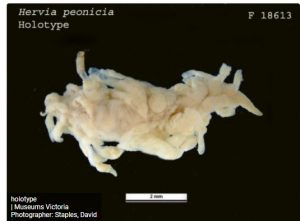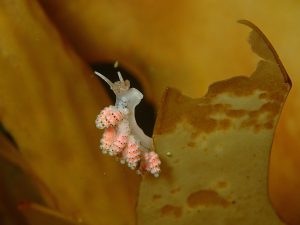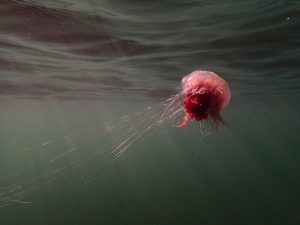Victorian teacher Nick Shaw’s images of unusual underwater creatures with beautiful colouring quickly caught our eye. After further investigation, it turned out that some of Nick’s images were the first images of these species in the ALA that were not museum holotypes.
Having images of these creatures in their natural environment is valuable. Seeing the shape and colours really helps with identification as sometimes the preservation methods used with the holotype make it very difficult to know what the animal actually looks like.


Nick has always been interested in plants and animals. His honours thesis was on the succession of a warm temperate rainforest in Victoria. While at university, he both contributed specimens to and assisted with identification at a herbarium.
“I particularly like that the ALA has the old herbarium records in it as well as occurrence records as it gives me an idea of what plants I will see in different parks,” Nick said.
Being an avid photographer, Nick now uses his spare time to look for orchids on land and for nudibranchs (soft-bodied marine gastropod molluscs, such as sea slugs) when snorkelling.
“Whatever else I see when I’m out and about is a bonus, and I have many more photos to identify and contribute to the ALA.”

When using the ALA, Nick searches the species pages to see where particular species he’s interested in have been seen, and to assist him with identification. He also uses location information to learn about what he might see in places he’s planning to visit. He is fairly keen to see a Victorian Funnel Web, so he looks to see where they have been spotted in his local area so he can search nearby.
Nick also uses the ALA in class with his students, and finds it particularly compatible with the biodiversity component of his Environmental Science class and the Classification topic in the younger year levels.

Nick initially discovered the ALA when searching online to find orchid occurrence information, and attended an ALA Teacher Professional Learning session last year that was run at his school in association with the Victorian Biology Teachers Network.
While we think a lot of people wouldn’t be volunteering to join Nick on his quest to see a funnel web, please contact us if you’d like to share how you’re using the ALA.
Please contact the ALA’s Education Officer, Taryn Johnson, if you would like to attend an ALA Teacher Professional Learning session.